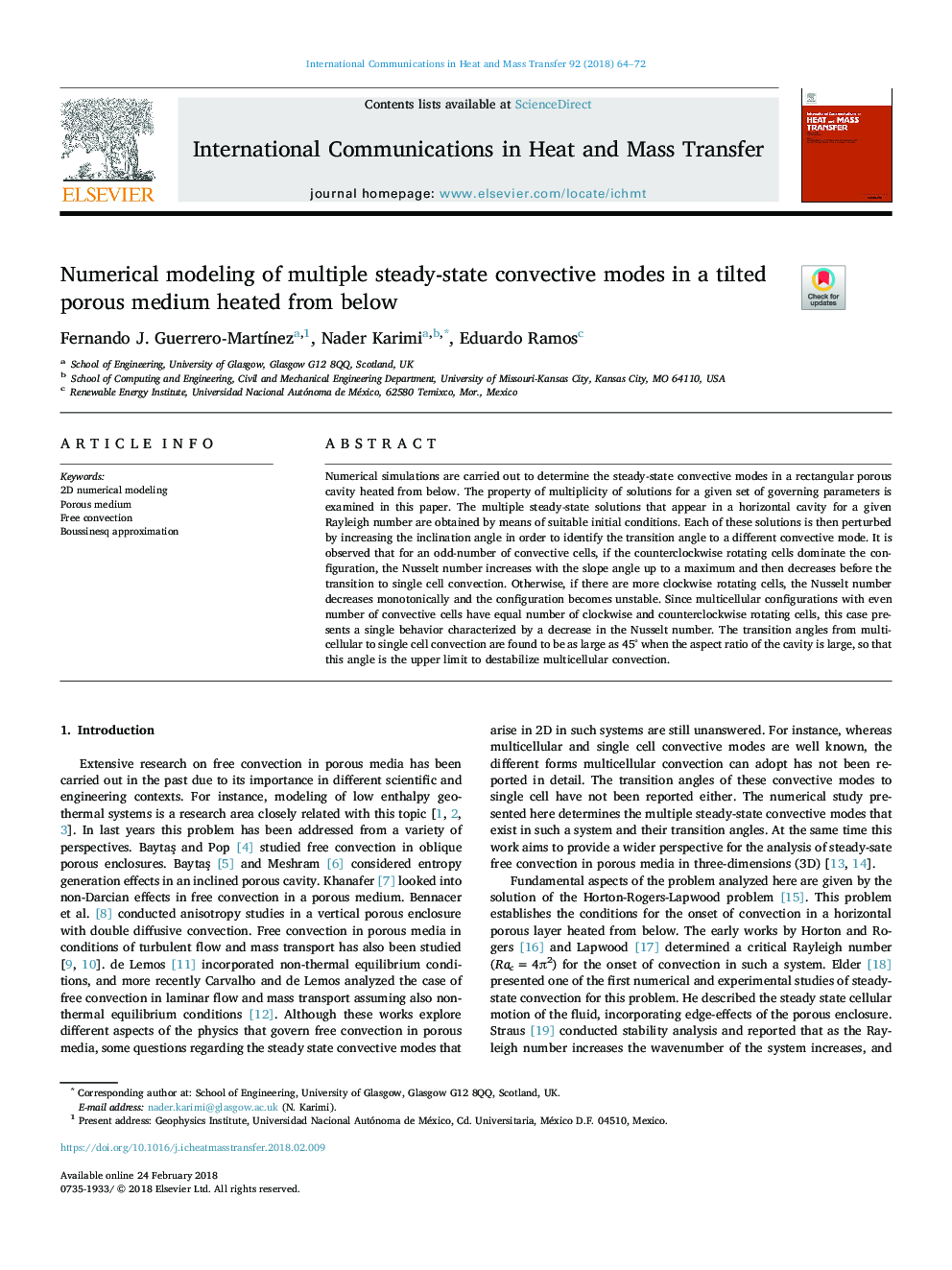| Article ID | Journal | Published Year | Pages | File Type |
|---|---|---|---|---|
| 7052979 | International Communications in Heat and Mass Transfer | 2018 | 9 Pages |
Abstract
Numerical simulations are carried out to determine the steady-state convective modes in a rectangular porous cavity heated from below. The property of multiplicity of solutions for a given set of governing parameters is examined in this paper. The multiple steady-state solutions that appear in a horizontal cavity for a given Rayleigh number are obtained by means of suitable initial conditions. Each of these solutions is then perturbed by increasing the inclination angle in order to identify the transition angle to a different convective mode. It is observed that for an odd-number of convective cells, if the counterclockwise rotating cells dominate the configuration, the Nusselt number increases with the slope angle up to a maximum and then decreases before the transition to single cell convection. Otherwise, if there are more clockwise rotating cells, the Nusselt number decreases monotonically and the configuration becomes unstable. Since multicellular configurations with even number of convective cells have equal number of clockwise and counterclockwise rotating cells, this case presents a single behavior characterized by a decrease in the Nusselt number. The transition angles from multicellular to single cell convection are found to be as large as 45° when the aspect ratio of the cavity is large, so that this angle is the upper limit to destabilize multicellular convection.
Related Topics
Physical Sciences and Engineering
Chemical Engineering
Fluid Flow and Transfer Processes
Authors
Fernando J. Guerrero-MartÃnez, Nader Karimi, Eduardo Ramos,
